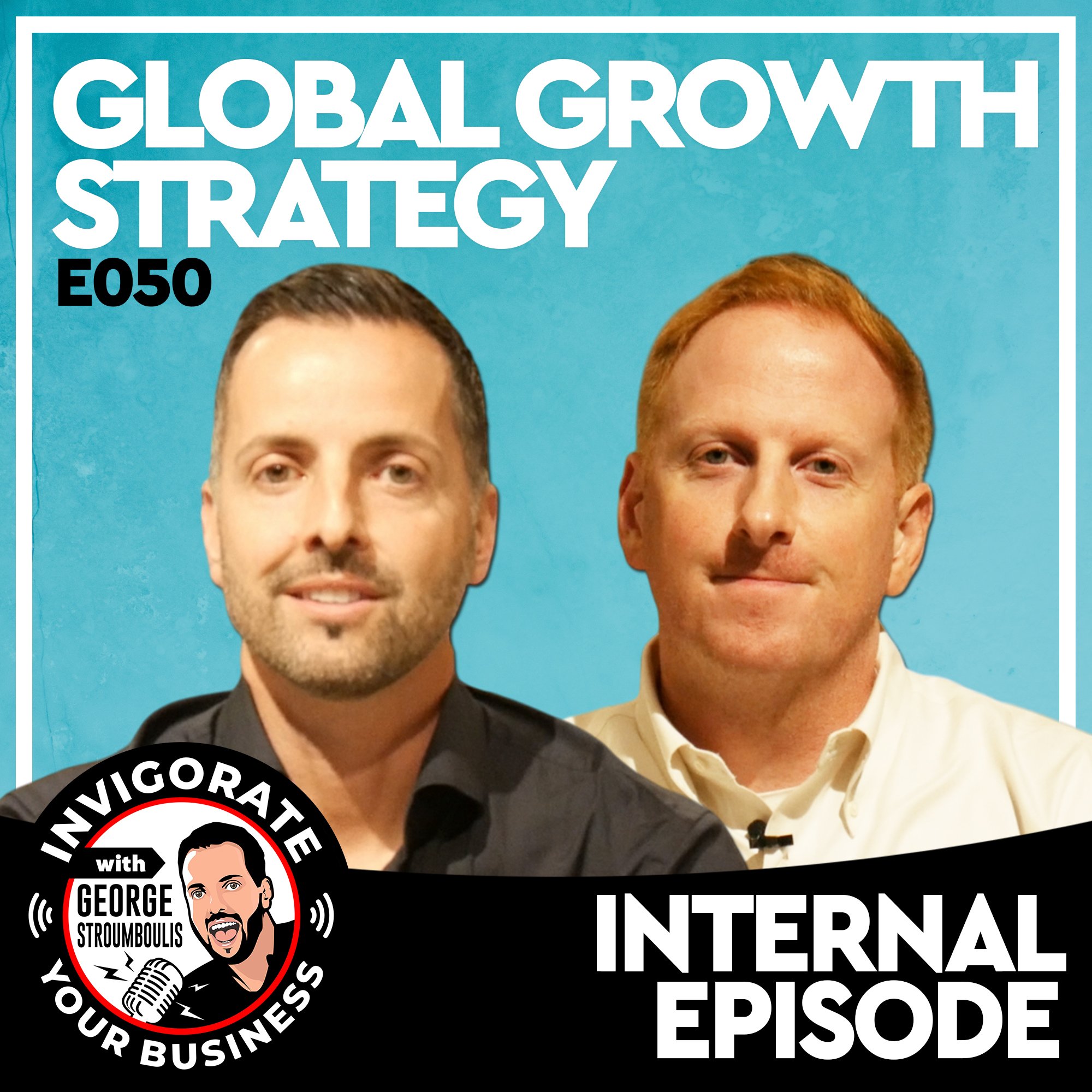48 HOUR TRIP TO HONG KONG & CHINA
48-Hour Trip to Hong Kong: A Day in the Life of Global Business
Sixteen hours in the air. Over a dozen meetings crammed into just 32 hours on the ground. A total of 48 hours of non-stop movement. It might sound grueling, but when you’re passionate about what you do, this is the drive that keeps everything moving forward.
Recently, I embarked on one of these whirlwind trips—this time to Hong Kong. With critical projects in motion and deadlines approaching, this quick trip was essential to meet with factories, suppliers, designers, and our local team. It wasn’t just about checking boxes; it was about ensuring that every detail is handled with precision, and every project is progressing as expected.
Why It’s Worth It
Trips like this are fueled by a dedication to quality and a relentless drive to keep things moving. Every meeting, no matter how brief, plays a crucial role in ensuring that we stay on top of our projects. Whether it’s reviewing designs with our creative team, aligning with suppliers, or ironing out last-minute details with factory partners, these face-to-face interactions are crucial in delivering the best possible results for our clients.
The Pace of Progress
There’s something uniquely invigorating about these fast-paced trips. The adrenaline kicks in the moment the plane touches down. From meeting to meeting, with barely any time to rest, it’s all about making the most of the limited time available. But despite the long flights and packed schedules, the energy comes from knowing this is what it takes to keep the wheels turning and progress moving.
Dedication to Every Detail
At the end of the day, it’s not just about getting the job done—it’s about getting it done right. Each visit ensures that we’re connected to every element of production and design, catching potential issues early, and maintaining the high standards we’ve set for ourselves. It’s a hands-on approach, and it’s what sets us apart.
This 48-hour trip to Hong Kong, though short, was a reminder of the dedication and determination required to run a global business. Every flight, every meeting, and every quick coffee break is part of the journey to building something great.
The Bigger Picture
These quick trips are just part of the bigger picture. They remind us that building and growing a business takes grit, focus, and constant effort. And even though it can be exhausting, there’s a deep satisfaction in knowing that each of these trips brings us one step closer to delivering excellence for our clients.
In this business, it’s all about moving forward—one project at a time—no matter how far the next flight takes us.
“Some meetings need to take place in person. And balancing this requirement with a family back home, results in quick, hyper focused trips.”
What is the longest flight in the world and what effects can flying too much have on your body?
The Longest Flight in the World
As of 2024, the longest commercial flight in the world is operated by Singapore Airlines, flying from Singapore (Changi Airport) to New York (John F. Kennedy Airport). The non-stop flight covers a distance of approximately 9,537 miles (15,348 kilometers) and takes around 18 to 19 hours depending on winds and other factors. The flight operates using an Airbus A350-900 Ultra Long Range (ULR) aircraft, designed for ultra-long-haul journeys.
Effects of Flying Too Much on Your Body
Frequent and long-haul flying can have various impacts on the body, particularly if you’re regularly exposed to flights of extended duration. Here are some common effects:
1. Jet Lag
Cause: Traveling across multiple time zones disrupts your circadian rhythm, which regulates your sleep-wake cycle.
Symptoms: Fatigue, difficulty concentrating, irritability, and disrupted sleep patterns.
Prevention: Gradually adjusting your sleep schedule before your trip, staying hydrated, and avoiding alcohol or caffeine during flights can help mitigate jet lag.
2. Dehydration
Cause: The low humidity levels in airplane cabins can lead to fluid loss.
Symptoms: Dry skin, headaches, fatigue, and an increased risk of illness due to dried-out mucous membranes.
Prevention: Drink plenty of water before, during, and after flights, and avoid alcohol and caffeine, which can contribute to dehydration.
3. Deep Vein Thrombosis (DVT)
Cause: Sitting in cramped spaces for extended periods can impede blood circulation, leading to blood clots, particularly in the legs.
Symptoms: Swelling, pain, or tenderness in the legs, and in severe cases, shortness of breath if a clot travels to the lungs.
Prevention: Regularly stretch or walk around during flights, wear compression socks, and stay hydrated to improve circulation.
4. Immune System Suppression
Cause: Prolonged exposure to cabin air (which is recirculated) and the stress of frequent travel can weaken your immune system, making you more susceptible to illness.
Symptoms: Frequent colds, infections, or fatigue after flights.
Prevention: Wash hands frequently, use hand sanitizer, and try to maintain a healthy diet and sleep routine.
5. Muscle Stiffness and Joint Pain
Cause: Prolonged periods of immobility can lead to stiffness and discomfort, particularly in the neck, back, and legs.
Symptoms: Aches, soreness, and limited range of motion.
Prevention: Perform in-seat stretches, get up to walk around, and engage in light movement or exercises to relieve stiffness.
6. Radiation Exposure
Cause: At high altitudes, there is greater exposure to cosmic radiation, especially on long-haul international flights. Frequent fliers, including airline crew, may be at a slightly higher risk.
Effects: Although generally considered minimal for occasional travelers, repeated exposure can increase cumulative radiation levels, potentially elevating cancer risk over time.
Prevention: While the risk is low, monitoring flight frequency and discussing with a doctor if you’re a very frequent flyer may help.
7. Disrupted Sleep Patterns
Cause: Long-haul flights, jet lag, and overnight flights can disrupt natural sleep cycles.
Symptoms: Insomnia, excessive daytime sleepiness, difficulty concentrating, and mood swings.
Prevention: Use sleep aids like eye masks, earplugs, or noise-canceling headphones, and try to adjust to the local time zone upon arrival.
8. Swollen Feet and Ankles
Cause: Prolonged sitting and cabin pressure changes can cause fluid retention, leading to swelling in the lower extremities.
Symptoms: Swollen feet, ankles, or legs after flights.
Prevention: Wearing compression socks, elevating your feet when possible, and walking around the cabin periodically can help reduce swelling.
Conclusion
While frequent long-haul flights can take a toll on the body, staying proactive with proper hydration, movement, and sleep adjustments can help minimize the negative effects. Understanding the risks and taking steps to mitigate them ensures a healthier, more comfortable experience when flying extensively.
Why Does the world go to China for manufacturing?
The world turns to China for manufacturing due to a combination of economic, logistical, and infrastructural factors that make it a global hub for production. Here are the key reasons:
1. Cost Efficiency
Low Labor Costs: For decades, China's lower labor costs have been a major draw for manufacturers, making it much cheaper to produce goods in China compared to developed nations. While wages in China have risen over the years, the country still offers a relatively lower cost of labor for many industries.
Economies of Scale: China's vast manufacturing sector benefits from economies of scale, meaning the more products are made, the lower the cost per unit. This allows companies to produce goods more cheaply and at larger volumes than in many other countries.
2. Advanced Infrastructure and Logistics
Supply Chain Integration: China has developed a well-integrated supply chain infrastructure, allowing raw materials, components, and finished goods to be efficiently sourced, produced, and distributed. Factories in China are often clustered in industrial zones, enabling manufacturers to source materials and parts locally and quickly.
Transportation Networks: China has invested heavily in infrastructure, including roads, ports, airports, and railways. This facilitates the rapid and cost-effective transportation of goods both within China and for export to international markets.
Access to Shipping Routes: China's geographical location offers direct access to major shipping routes, making it easier and faster to export goods globally.
3. Large Workforce with Specialized Skills
Massive Labor Force: China has the largest labor force in the world, allowing manufacturers to scale up production rapidly without facing labor shortages. This is particularly important for companies looking to produce large quantities of goods quickly.
Skilled Workforce: Over the years, China has developed a highly skilled and experienced workforce in key industries, especially in electronics, textiles, and consumer goods. Factories are staffed with workers who have the necessary technical expertise to produce high-quality products at a lower cost.
4. Manufacturing Expertise and Experience
Decades of Experience: China has been the "world's factory" for several decades. This experience has helped Chinese manufacturers develop world-class capabilities in producing a wide range of goods, from simple textiles to complex electronics.
Technological Advancements: Chinese factories have invested in automation, robotics, and advanced manufacturing technologies, allowing them to improve productivity and produce sophisticated products, including smartphones, machinery, and automobiles.
5. Vast Manufacturing Ecosystem
Industrial Clusters: China has created large industrial zones that specialize in specific industries, such as Shenzhen for electronics or Guangdong for textiles. These clusters enable manufacturers to easily source materials and collaborate with other companies in their sector, reducing lead times and costs.
Component Suppliers: Many component suppliers are located in close proximity to manufacturers, making it easier to assemble products quickly. For example, the electronics industry benefits from having a network of suppliers who provide everything from microchips to packaging materials.
6. Government Support and Policies
Incentives and Subsidies: The Chinese government offers incentives like tax breaks, subsidies, and reduced land costs to attract foreign companies to manufacture in China. These policies lower the overall cost of production for businesses.
Trade Policies: China has negotiated favorable trade agreements with many countries, facilitating easier and cheaper export of goods. Additionally, the country’s large free trade zones and relaxed regulations for foreign companies encourage international businesses to set up manufacturing operations there.
7. Speed and Flexibility
Rapid Production: Chinese factories are known for their ability to quickly scale up production to meet global demand. They are highly flexible and can adapt to changing production needs, allowing companies to respond to market demands more swiftly.
Quick Prototyping: China excels at rapid prototyping, particularly in industries like electronics. This makes it a prime destination for companies looking to bring products from the design stage to market quickly.
8. Large Domestic Market
Access to Chinese Consumers: By manufacturing in China, companies also gain easier access to its massive domestic market of 1.4 billion people. Many businesses set up manufacturing operations in China not only for export but also to tap into this lucrative consumer base.
9. Global Dominance in Key Sectors
Electronics and Technology: China is the world's leading manufacturer of electronics and technology products. Companies like Apple, Huawei, and Samsung rely heavily on Chinese manufacturing for smartphones, tablets, and other tech products.
Textiles and Apparel: China remains a dominant force in the global textile and apparel industry, producing everything from fast fashion to high-quality clothing for international brands.
10. Intellectual Property Improvements
Better IP Protection: Although concerns about intellectual property (IP) theft were common in the past, China has made improvements in IP protection, particularly in sectors like technology. This has given more confidence to companies seeking to manufacture high-tech products in the country.
Conclusion
The combination of low costs, advanced infrastructure, a vast labor force, and manufacturing expertise makes China an attractive destination for global brands looking to manufacture their products. While other countries are emerging as competitors in the manufacturing space, China remains dominant due to its established ecosystem, experience, and ability to deliver at scale and speed.
How to be an effective entrepreneur and business owner of a global company
Being an effective entrepreneur and business owner of a global company requires a mix of strategic thinking, leadership skills, cultural understanding, and operational efficiency. Here are the key elements to mastering this role:
1. Develop a Global Vision
Think Big and Long-Term: Start with a clear vision of where you want to take your business on a global scale. A successful global entrepreneur anticipates long-term trends and develops strategies that can adapt to various markets.
Stay Agile: The global market is dynamic, with shifting consumer preferences, regulations, and technologies. A flexible approach helps you pivot when necessary and seize new opportunities.
2. Understand Different Markets
Research Local Markets: Understanding cultural differences, consumer behaviors, and market needs is essential for success in different regions. Each market is unique, so tailor your product, marketing, and communication strategies accordingly.
Adapt to Local Regulations: Compliance with laws, trade regulations, and taxes in different countries is critical. Make sure to hire local legal and tax experts to guide your global expansion.
3. Build a Strong and Scalable Infrastructure
Create a Scalable Business Model: Ensure your business can grow efficiently across different markets without sacrificing quality. This includes having scalable processes for operations, manufacturing, and customer support.
Leverage Technology: Use advanced technology to streamline operations, manage international teams, and reach global customers. Tools like cloud-based platforms, AI, and digital communication systems are essential for efficient global business management.
4. Effective Global Leadership
Build a Strong Team: Surround yourself with a diverse team that understands local markets and can bring different perspectives. A mix of local and global talent will help you navigate cultural nuances and business challenges.
Empower Local Leaders: Delegate authority to local managers who understand the local market. Empowering local leadership allows for faster decision-making and more effective market adaptation.
Foster a Shared Culture: While adapting to local cultures is key, it’s also important to create a unifying company culture that aligns with your core values, mission, and vision. A shared culture keeps your global teams connected.
5. Effective Communication Across Borders
Clear and Consistent Communication: Ensure you have effective communication channels in place for global teams. Use tools like video conferencing, project management software, and real-time messaging to stay connected with employees in different time zones.
Be Culturally Sensitive: Adapt your communication style to the local customs and business practices of each region. Building relationships and trust with local partners, clients, and teams requires cultural awareness and respect.
6. Master Financial Management
Understand Currency Exchange and Cash Flow: Managing a global company involves navigating multiple currencies, exchange rates, and payment systems. Keep a close eye on cash flow, working capital, and currency fluctuations.
Efficient Tax and Compliance Strategy: Understand the tax laws in the countries where you operate, and develop strategies to minimize tax liability and optimize financial performance.
7. Leverage Strategic Partnerships
Form Local Partnerships: Collaborate with local distributors, suppliers, and marketing partners to gain insights into the local market and accelerate your entry into new regions.
Build Global Networks: Establish connections with other global entrepreneurs, industry leaders, and investors to stay informed about market trends, regulations, and opportunities.
8. Adapt to Global Supply Chain Complexities
Diversify Your Supply Chain: Don’t rely on a single supplier or manufacturer for your global operations. Diversify your supply chain to mitigate risks, including political instability, tariffs, or disruptions like the COVID-19 pandemic.
Optimize Logistics: Managing shipping, customs, and distribution in various countries can be complex. Work with logistics experts to streamline your international supply chain and minimize delays or added costs.
9. Focus on Customer Experience
Localize Your Offering: Customize your products, services, and customer experience for each local market. From language localization to regional preferences, tailor your brand to fit the specific needs and desires of your global customers.
Offer Multilingual Support: If your business operates in multiple countries, providing customer service in the local language is a must. Ensure that your support teams are culturally aware and responsive to local customers’ needs.
10. Stay Committed to Continuous Learning
Stay Ahead of Global Trends: Keep up with the latest trends in technology, global commerce, and consumer behavior. Attend international conferences, read global industry reports, and engage with global business networks.
Learn from Setbacks: Building a global company comes with unique challenges. Learn from failures and setbacks, using them as stepping stones to improve and refine your strategies.
11. Maintain Ethical and Sustainable Practices
Adopt Ethical Business Standards: Conduct business with integrity and transparency in all markets. This helps build trust and loyalty with both customers and business partners globally.
Commit to Sustainability: In today’s global marketplace, sustainability is a priority. Incorporate eco-friendly practices in your operations, supply chain, and products, and make sure they comply with local environmental regulations.
12. Adapt to Digital Transformation
Leverage E-commerce and Digital Channels: Expand your reach by using digital marketing, e-commerce platforms, and social media to attract a global audience. Invest in SEO, multilingual websites, and targeted advertising for different regions.
Digital Payments and FinTech: Offer diverse payment options and ensure secure and seamless transactions for customers in various countries.





















